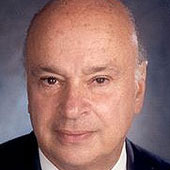Toward A Pan-American Energy Community?
Could the late 1950s Europe be a model for an energy community of all Americas?
May 4, 2004
In thinking about the emergence of an American energy community, the lessons from the European Coal and Steel Community in the 1950s offer useful insights into the importance of small steps to realize greater goals.
The architects of the European Common Market — Jean Monnet and Robert Schuman — set the basis for a regime by which Europe’s coal and steel resources would be managed cooperatively in order to ensure access to all community nations. It was called the European Coal and Steel Community (ECSC).
At that time, the convergence of European geopolitical interests in coal and steel had very different imperatives. But the concept is closely related to the mutual interests in the Americas today to develop the region’s energy resources.
In describing his goals for Europe, Jean Monnet emphasized that it required a pragmatic approach.
“Men’s attitudes must be changed,” he said. “Words are not enough. Only immediate action on an essential point can change the present static situation. This action must be radical, real, immediate and dramatic. It must change things and make a reality of the hopes which people are on the verge of giving up.”
To him, the strategy was clear. “This proposal [for a coal and steel community] has an essential political objective: to make a breach in the ramparts of national sovereignty, which will be narrow enough to secure consent — but deep enough to open the way toward the unity that is essential to peace [and we might add, for our purposes in the Americas, for development].”
An American Energy Community patterned after the ECSC would ensure access to energy for every nation in the Western Hemisphere.
It would be structured to take into account the productive capacity and needs of each nation, with each one benefiting in areas in which it holds a competitive or comparative advantage.
The energy markets of the Western Hemisphere hold one of the keys to a new relationship among the nations of the Americas.
Over the last several years, they have begun to integrate. In NAFTA, a new North American Electric Reliability Council (NERC) is making long-term plans to integrate electric grids and protect against outages in the United States, Mexico and Canada.
It is a small step toward mobilizing the hemisphere’s great natural wealth.
If the hemisphere is to grow into a Greater American community, the first challenge is creating a comprehensive framework for non-discriminatory energy investment and integrated networks — similar to what the Europeans did in the 1950s.
This means exchanging power based on reciprocal and non-discriminatory treatment and market access, no matter where an energy facility is located. And it means reinforcing many of the region’s power companies with better-trained, more sophisticated personnel.
In the early 1990s, Presidents César Gaviria of Colombia, Carlos Salinas of Mexico and Carlos Andrés Pérez of Venezuela called on the nations of the Americas to endorse such a plan.
They proposed an agreement “to promote investment in exploration and in the oil, coal and energy industries in our continent through explicitly coordinated measures through fiscal and deregulatory incentives, a preferential tax regime for investments in the exploration of oil and coal and the production and distribution of energy.
They further stated that, “we must liberalize inter-American energy trade and even create a preferential tariff regime for hemispheric producers and exporters of oil and coal.”
This was, in effect, a call for an American energy community. It is time to expand on this vision and adapt it to the global environment by creating in the Americas a mixed public- /private-sector authority to undertake energy-related projects.
Before such a community can be formed, however, the United States will have to confront the mythology of low-cost Middle East oil.
Middle East oil is the most expensive fuel the world has ever known and could become even more expensive, considering its penchant for extremism and that the region has yet to feel the impact of the information revolution and the pressures for democracy.
When we calculate the cost of Middle East oil, we conveniently leave out all the indirect costs of security and intelligence purposes, including military and security assistance and other strategic commitments that are required to defend it.
Right now, U.S. taxpayers foot that bill. A fraction of this investment in the Americas would yield considerable production and lead to economic development that would help reduce poverty, illegal migration and narcotics traffic.
The goal of an American energy community would be to balance the distribution of energy supplies between the energy-rich and the energy-poor countries of the hemisphere, contribute to economic stability and job creation in the nations of the Americas — and invite inter-American cooperation.
The community would encompass all forms of energy: fossil, hydroelectric, geothermal, solar and renewable.
It would expand its financing of the construction of dams and gas pipelines, integrate power grids and expand distribution in rural electrification programs. And it would cover both the public and private sectors by issuing bonds for specific projects, secured by energy revenues.
Financing also could be provided for countries lacking fossil fuels to develop alternative renewable sources out of the common energy fund, as well as to promote energy diffusion and conservation initiatives.
In addition, the community could:
Read previous
Europe’s Soft Power
May 3, 2004
